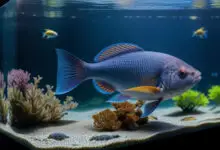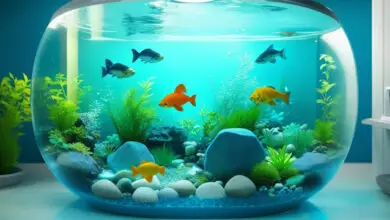Natural and Chemical Ways to Make Water Clean for Tanks

Keeping the water in tanks clean is very important. When water sits for a long time, things can grow in it. There are natural ways and chemical ways to help clean up water for tanks. We will discuss both options here.
Why It Matters So Much
Tanks are used for many things. Some hold drinking water. Others might have water for plants or for fish tanks. Dirty water can make people or animals sick. It can also clog pipes or damage equipment. That is why there are different methods to keep tanks clean.
Chemical Options to Clean and Treat Water
Using chemicals is a common way to get rid of germs and dirt. The main options are:
Chlorine
Chlorine is added to water to kill germs. It works well but can leave taste and smell issues if too much is used. Careful measuring helps get this right.
Bleach
Bleach has chlorine too. Some tanks use bleach instead of pure chlorine. It works fast on germs and algae. But too much is not good for health, so control the amount used.
Hydrogen Peroxide
This chemical gives extra oxygen to water. The oxygen kills germs. It also removes waste and stops algae growth without leftover taste or smell problems.
Ozone
Ozone is a gas that can be bubbled through water. It kills germs fast. But it does not stay in the water long, so repeat treatments may be needed.
Natural Options for Water Care
Nature has solutions too for cleaner tank water:
Sunlight
Letting water sit in sunlight kills germs and algae. Using clear tanks helps sunlight reach more water. This takes longer but avoids chemical issues.
Plants
Floating or planted tank plants clean water too. They soak up nutrients that algae needs to grow. And their roots give good spots for helpful bacteria.
Natural Filtration
Layers of sand, gravel and charcoal filter water without chemicals. More cleaning of filters is needed to keep them working well.
Beneficial Bacteria
“Good” bacteria eat waste and break it down. This stops the nutrients that start algae growth. Adding bacteria cultures or biomedia helps boost the useful bacteria.
Enzymes
Enzyme water additives help break down organics for the filter bacteria. This gives cleaner water and less waste buildup.
Water Changes
Even with the best cleaning methods, tanks need partial water changes. This removes some waste buildup and brings in fresh water.
Comparing the Two Approaches
Both natural and chemical options do the job for cleaner water. Here is how they stack up:
| Cleaning Method | Set Up Time | Costs | Maintenance |
|---|---|---|---|
| Chemical | Fast | Cheap for supplies but need replacing | Testing and chemical monitoring |
| Natural | Slower | Moderate initial costs | Filter cleaning and part replacing |
Chemicals often give faster results. But natural methods promote balance in the tank environment long-term. Below are some specific pros and cons of each cleaning approach:
Chemical Treatment Benefits:
- Fast germ and algae killing
- Simple to measure and add chemicals
- Low start-up costs
Chemical Treatment Drawbacks:
- Can harm inhabitants if too much used
- Need to keep buying chemicals
- Possible odors or tastes left behind
Natural Treatment Benefits:
- Gentle on plants and animals
- Balances whole tank ecology
- Lower costs after initial purchase
Natural Treatment Drawbacks:
- Slower start-up while balance builds
- More mechanical cleaning needed
- Parts may need periodic replacing
In the end it comes down to what works for each situation. Below is some extra advice when deciding on an approach.
Tips on Choosing Water Treatment Methods
For drinking water
Chemicals may be needed to meet safety standards. Chlorine at low doses with carbon filtering tends to work well.
For aquarium tanks
Natural planted tanks with bacteria give healthy fish habitats. Light chemical doses can assist.
For multi-use tanks
A combination often works best. Use some chemicals for quick cleaning boosts while beneficial bacteria provide ongoing balance.
For pond tanks
Sunlight and plants paired with bacteria cultures and enzymes give crystal clear water.
Setting Up Natural Cleaning Systems
Going the natural route takes some effort but creates clear water. Follow this process for getting a natural system going:
1. Build a natural filter
Use layers of coarse media like bio balls, sponges and lava rocks. Top with finer filtration pads. Add beneficial bacteria starter cultures to speed things along.
2. Introduce cleaner species
Add algae eating snails, shrimp and fish suited to the tank size. Floating plants also filter nicely.
3. Give it time
In 4-6 weeks bacteria colonies establish and begin cleaning. Cloudiness means it is still cycling. Be patient!
4. Test often
Check ammonia and nitrite levels weekly at first using test kits. Later monthly checks are enough. Add bacteria or do water changes as needed.
**5. Clean filters regularly **
Rinse mechanical media monthly in old tank water to remove gunk. Replace worn out materials as required.
Set up right, natural filters can handle waste and keep water glass clear!
Keys to Success with Chemical Water Treatment
Chemicals speed up cleaning but take care using them. Here are tips for best practices:
Start slow
Begin with small doses, then increase if needed after testing. It is easier to add more.
Read the label
Follow directions on amounts to use. Chemicals like bleach need exact dilution.
Consider inhabitants
Make sure cleaner species can handle chosen chemicals and doses.
Test frequently
Check toxin levels with test strips. Stop adding chemicals when safe levels show.
Limit light
Algae needs light. Use opaque tanks or shaded areas to slow regrowth.
Change water too
No matter what chemicals you use, periodic partial water changes assist.
With the right process, chemical cleaning brings good results.
Combining the Two Methods
Many tanks use both natural and chemical techniques together. Each can make up for the other’s weaknesses. Here are two common combo approaches:
1. Bacteria with periodic chemical clearing
Beneficial cleansing bacteria do daily work. Add chemical doses as needed when waste or algae crops up.
**2. Plants and filters plus enzyme boosts **
Planted tanks with layered filters form the base cleaning. Enzyme additives give a helping hand breaking down organics.
Finding the right balance allows taking advantage of both methods!
In Closing
There are many ways to clean up water held in tanks for better health and function. Natural options like bacteria, plants and special filters promote balance. Chemical additives like chlorine and hydrogen peroxide work quickly in crisis spots.
Paying attention to inhabitants’ needs and measuring toxin levels helps tailor the best process for each tank. Combining some natural and chemical techniques often gives good outcomes. Test, observe and adjust to find the ideal cleaning approach.
With the right cycles and maintenance as covered here, tanks can have clear water for years to come.







